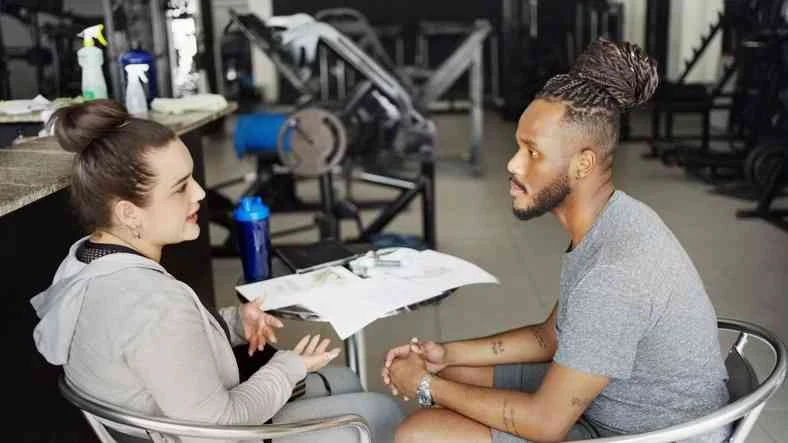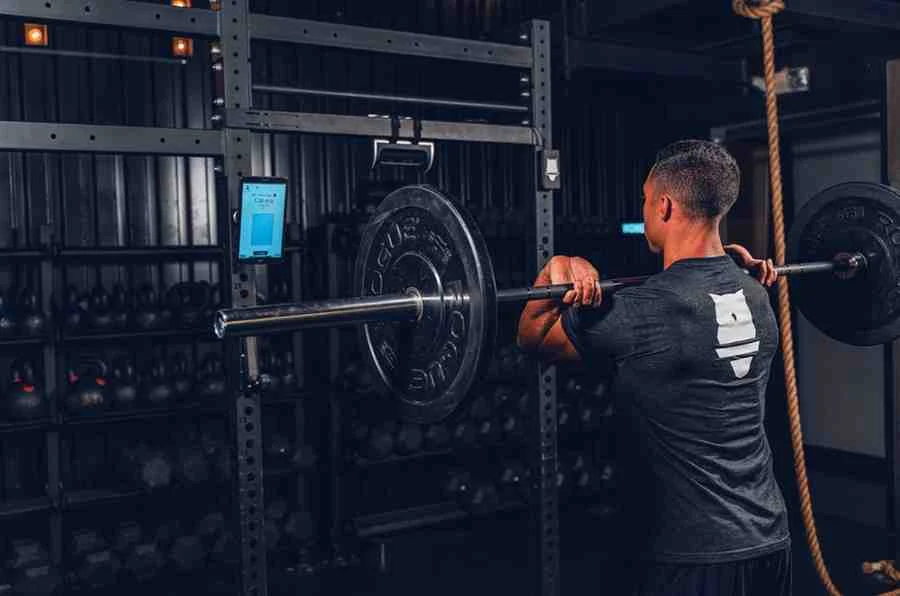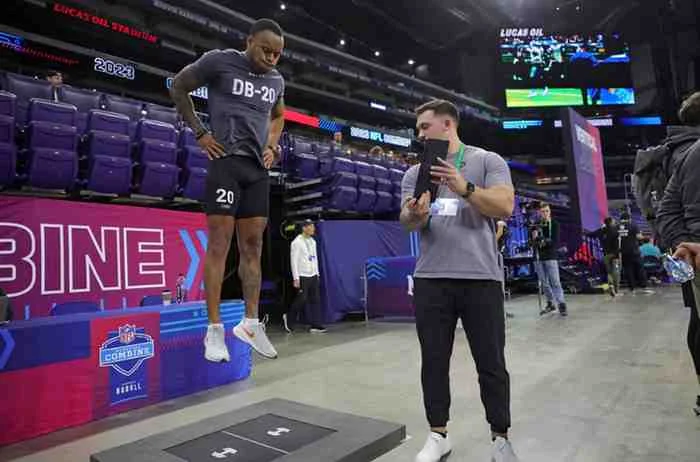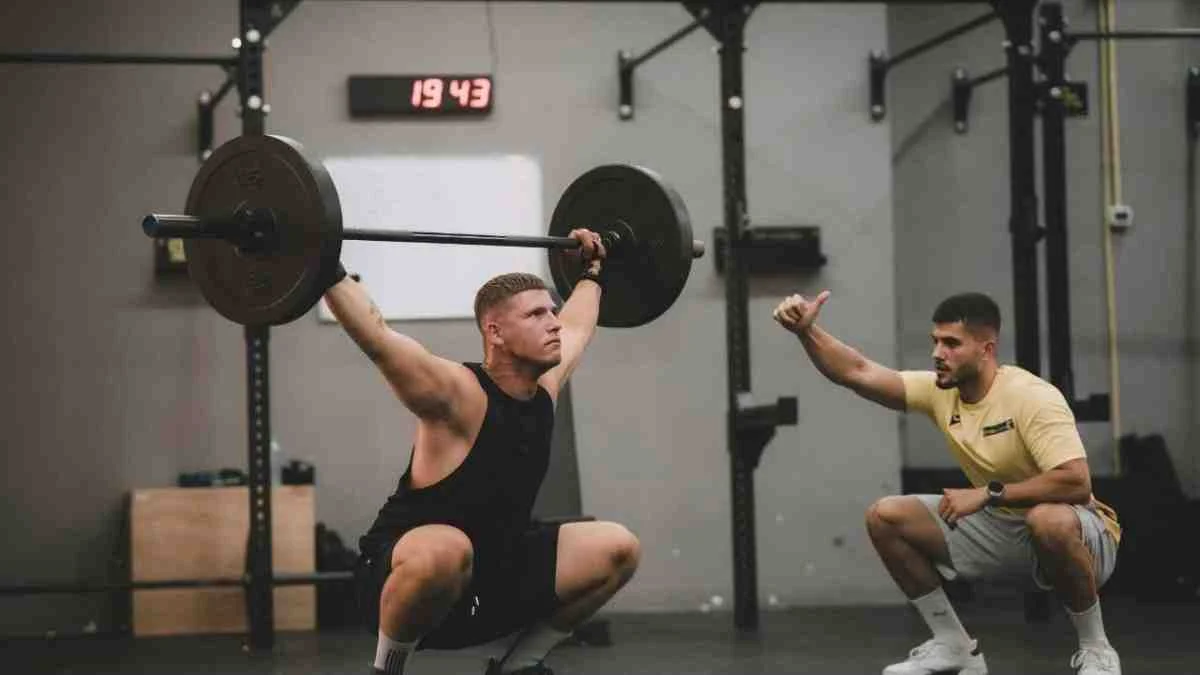[mashshare]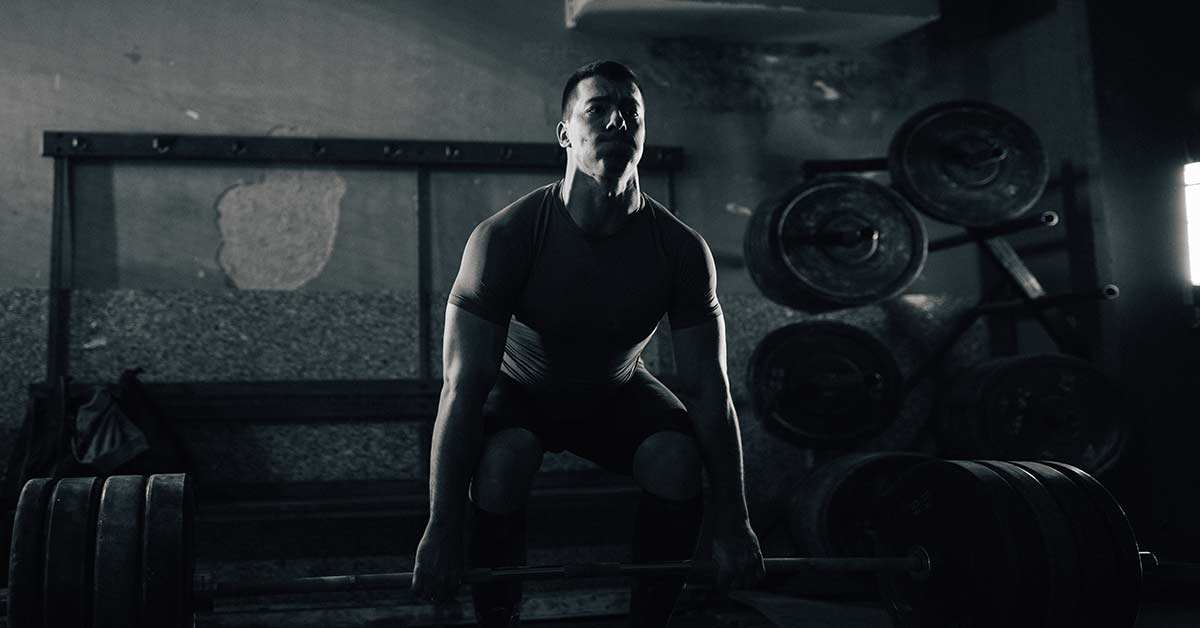
Elliott Richardson is entering his eighth year as the Head Strength and Conditioning Coach at Acadia University in Nova Scotia, Canada, and will take over the role of Manager of Sports Performance this summer. At Acadia, he oversees the development of 300 varsity athletes across 11 teams along with two other full-time S&C coaches, and mentors another 40 undergraduate strength and conditioning interns through the School of Kinesiology. In addition, Richardson operates a private training business that supports over 100 local athletes of different ages and abilities, and a satellite training site for the Canadian Sport Centre Atlantic to support provincial and national sport athletes in the Canadian Institute of Sport system.
Freelap USA: What are the key things you track in a physical preparation setting?
Elliott Richardson: Early in my career, I only “tested” my athletes 2-4 times per year in the typical exercises. For the most part, people got stronger and fitter, and some made improvements in higher level KPIs such as sprinting, jumping, and change of direction. Our teams also went from finishing low to middle of the pack in the standings to finishing middle to top of the pack. In 2017-18, our teams won a cumulative 76% of their games and almost exclusively finished in the top three in our conference. We also had more than half of our team sports compete past conference play in national championships.
It is important to remark that although I believe there’s a correlation between emphasizing performance improvement and improving performance, I’m fully aware that the work done in physical preparation is only a part and is by no means causal in our improvement. A younger me might have assumed the improvement in physical ability was across the board and was a key reason for sport success. However, a more educated and wiser me has learned to look deeper into our metrics and realize that not everyone is as good as we think they are, and not everyone shows the same improvement.
With this realization during my MSc in S&C, I started shifting my focus to more frequent tracking of performance to get a better picture of an athlete’s performance and gain more immediate feedback. This was for a few reasons:
- To prioritize other things than just “what is on the bar.”
- To show them improvements in those areas.
- To correct course or change the plan if things aren’t going well.
Currently, we track several metrics depending on sport and, of course, logistics. Prior to strength sessions, we consistently track five reps of squat jumps—repeated on our GymAware. We do this after we take attendance and following our dynamic warm-up. This is in addition to tracking bar velocity through a strength training session and tracking sprint times in our speed workouts. (If you’re just starting off as a coach, the most important metric to track would be attendance, since it’s hard for athletes to improve if they’re not there. It’s also an essential culture piece when getting a program off the ground.)
I’ve also tried my hand at tracking self-reported questionnaire data and RPE-based data, though I’ve found that a large group environment, where your time for delivery of S&C content exceeds the time to prepare for it by a ratio of two or even three to one, makes it extremely challenging to make it actionable. Although it’s cool to say that you are like the pros and collect data, it doesn’t do any good if you can’t act on it, or even provide feedback to athletes about it. There was a recent journal article speaking to the importance of presenting the information back to athletes, or risk losing buy-in.
Although it’s cool to say that you’re like the pros and collect data, it doesn’t do any good if you can’t act on it, or even provide feedback to athletes about it, says @ERichStrength. Share on XFor someone with more limited time and/or financial resources, I think this information can manifest itself in something more immediate, actionable, and relatable, such as a countermovement jump or, if available, five reps of a squat jump repeated, as suggested by renowned strength coach Dan Baker. After all, we’re told that the purpose of these self-reported questionnaires is to create conversations with athletes who are fatigued to better optimize the training process. If that’s the case, and most are relatively good to go, then only the ones who are well below their average jump would be immediately recognizable to the coach. This could cut down on time spent having the conversation without overexposing the athletes to constant questions about their lives. In our situation, we have the GymAware set to either 5% or 10% of their best jump, and if they don’t get at least one “yellow” jump, then we have a quick conversation on how to best change the plan.
Devan McConnell at UMass Lowell would also do this by drop jump and quickly enter it into rolling data on Excel during warm-ups. Since this information would support or be similar to what is reported on a subjective questionnaire, a coach with limited time resources would be better off just doing the objective, on-the-spot monitoring. This could allow for an immediate conversation, while cutting down on the front- and back-end time of having to report subjective wellness for both athlete and coach. It also allows the athlete to see the immediate feedback from the relationship between decreased physical readiness and poor recovery strategies.
I plan to have another go at the subjective questionnaires, but cut them down to three questions. This is based on conversations with colleagues, as well as information gathered on social media, where I’ve seen pro teams only use three questions. At the end of the day, I think collecting data that is easy to digest and able to be applied almost immediately is the best approach in a small organization setting.
Freelap USA: What has been your progression in the organization and periodization of training schemes since you started coaching?
Elliott Richardson: Overall, the principle of full body training (or at least, relatively full body) has dominated my thought process and philosophy since I started coaching. This is matched with the needs and time available for the athletes that I work with. The Tier System by Joe Kenn has influenced how I organize my training, since most of my athletes are on a three-day program through their off-season and a four-day high-low program in the summer. I still like the tier system setup for athletes who only train two days per week year-round (like soccer), since you can prioritize days by leading with a total body lift (for me, generally an Olympic-based, or variation) type of exercise, or a lower body exercise (generally targeting strength). A combination of the tier system with my categorization of exercises based on movements (push, pull, knee, hip, anti-core), and undulated periodization influenced by the late Charles Poliquin (mesocycles alternating a high-low flow of 8-4-6-3 reps, for example) formed the bedrock of my programming.
Pairing and tri sets are commonplace, since Coach Boyle has been a significant influence on my training and philosophies. Over the years, I have gone back to doing some more linear periodization with novice athletes because they often take longer to adapt, thus requiring less of a need to change gears. With stronger athletes, I’ve started to scale back on the amount of accessory exercises I might place with a primary exercise (e.g., having a core, corrective, and mobility with clean), since stronger athletes take longer to hit their working sets and extra work can take away from their most transferable exercises. This contrasts with a novice athlete who might require more volume to make improvements and develop a larger work capacity. Overall, the structure of my organization and periodization of training has remained the same, though I’ve added more tools to my toolbox to accommodate the individual cases that my athletes present to me through the training process.
One significant change that I’ve made in my summer training program is shifting from a high-low four-day setup to a low-high setup. On low days, I put in higher volumes of speed work and higher intensity conditionings sandwiching the upper body training session. On high days, we still do plyometrics and sprints, except the purpose is to prime for the lower body training program, not fatigue athletes so that they can’t perform in the weight room. I discovered that athletes found it challenging to accept the fact that sprints take away from their ability to express strength in the weight room, so I shifted this focus to keep them primed and fresh for lower body days, so they continue to buy in. As part of the priming, we may do 2-4 timed sprints with plenty of rest to get our maximal effort speed work.
Part of this shift to low-high was also due to the observation that athletes found it hard to have a great lower body day after a few days off. By doing some CNS work through higher volume sprints followed by upper body lifting, the goal is to get the CNS ramped back up for the week, and again following their day off (Wednesday). Friday is generally a tough lower body lift as well, knowing they have two days off. On both of our high days, we do low conditioning, which is usually tempo runs. Some of the influence for this comes from Dan Cleather, my master’s degree supervisor and program director for St. Mary’s MSc. Strength & Conditioning, for identifying your “hot sessions” and “hot exercises.” It didn’t make sense to have lots of our “hot stuff”—plyometrics, sprints, weights, and conditioning—all on one day.
I’ve shifted from a heavy focus to trying to get more done with less load on athletes. Less with more is a significant topic of interest for me, says @ERichStrength. Share on XFinally, I’ve shifted from a heavy focus to trying to get more done with less load on the athletes. This is especially true once athletes get a few years into their training and have significant strength. I’ll drop the relative intensity of their prescriptions and include more “dynamic effort” type training using VBT to get effort high with less load. Additionally, at this point, the athlete’s maximum force capability is likely reaching diminished returns, so being able to express it faster would be a better choice. Less with more was a significant topic of interest in my master’s degree in S&C.
Freelap USA: What has been your experience with maximal strength training (>85% 1RM) for the development of team sport athletes, and what is the best training intensity for progress in the context of sport performance?
Elliott Richardson: When I first started, I think I fell into the trap of thinking that heavy and hard were important. After all, I was the “strength coach,” so therefore I should be evaluated based on how strong or how much stronger my athletes became, regardless of the stress that put on their systems, or how it transferred to their sport or their performance. I was also “rewarded,” since loading athletes up with near maximal loading facilitated performance improvements due to the relative low training status of our athletes.
I also didn’t consider the effect of relative intensity that exercise prescription had on my athletes. Based on my early theoretical teaching, I thought that if we were doing 3×12, they would be theoretically lifting at 70%, regardless whether they “went to the well” and had nothing in the tank to get there. If we were five or fewer reps, we were not only hitting 85% absolute intensity, but also hitting 90-100% relative intensity on a given basis. I probably broke a few athletes more than I should have, and genuinely feel bad about that.
It wasn’t until I started my Master of Science in Strength and Conditioning at St. Mary’s that I began to question these methods. Having influences like Dan John and Dan Cleather exposed me to the idea of a “slow cooking” approach. Ultimately, it became my research for my thesis.
I studied the sophomores, juniors, and seniors from my varsity football team (48 players in total) and put them through a 12-week training program that had a 5% difference in training intensity. The lighter group only worked up to 82.5% in their bench and squat, and 87.5% in their clean. After 12 weeks, we found that both groups made statistically similar improvements in 1RM strength. This was despite a total volume load of approximately 8,000 kg between the two groups. I wasn’t surprised by these results, though they did reinforce for me the degree to which we must push our athletes to make strength improvements.
For trained athletes with the capability to strain under load, the percent is probably lower than we think, and lower than what athletes want to do. I can contrast that with my experience with a sport like soccer, where we’ve had to engineer strain after seeing a performance week (RM test) result in near similar loads because players didn’t want to push themselves. We went forward with a modified APRE protocol (repping out the last set of a stable weight prescription) to determine the increase in load, which ended up turning into a 1×20 type workout based on reps on their last set. This added to my experience that a less-trained athlete can perform more reps at a given % of 1RM compared to a stronger athlete with more experience.
Although counterintuitive, athletes can make greater and safer strength gains with higher reps compared to lower reps, says @ERichStrength. Share on XAlthough counterintuitive, greater and safer strength gains can be made with higher reps compared to lower reps, since weaker athletes tend to lack the neuromuscular ability to coordinate muscular stiffness under heavier loads. By doing high reps, an athlete is able to fatigue themselves and eventually strain at the end of their set.
Stu Phillips, through his research at McMaster, has shown that fatiguing the muscles in general is a driver for adaptation. Moreover, Dan Baker and his presentations on velocity-based training have suggested that the velocity at the end of a set done until near failure is nearly identical to the velocity doing heavy singles or triples. From these experiences and an accumulation of knowledge, I’m confident that I undertrained weaker athletes and overtrained stronger athletes by thinking that I had to train conventional set/rep and percentage schemes. It reminds me that although some methods work, they don’t work for everyone.
Freelap USA: What are some practical injury prevention tactics from a data and implementation perspective that coaches can carry out?
Elliott Richardson: This is probably the biggest challenge in a small school setting, aside from implementing a well-rounded training program that targets the injury considerations for athletes and sports. Up until this year, we’ve had to send athletes away to a third-party physiotherapy clinic for treatments, which made it challenging to even collect comprehensive injury data (games missed, severity of injury, where injury occurred [practice, workout, etc.]) to enable us to create plans for the following years. The day-to-day injury management has been handled by undergraduate student athletic therapists.
The best we’ve been able to do to get ahead from a data perspective is talk with coaches about their perceptions of injuries, which are often skewed by injuries to key players and/or injuries at inopportune times of the year (e.g., playoffs). Now that we have a full-time athletic therapist, we’ll be able to collect and analyze data to look at trends and objectively evaluate our abilities to keep our players in their sport.
To deal with the lack of data, I resort to keeping on top of hot topics in the research and/or news. An example of this that has changed my practice with football is a paper that I saw last year. It indicated that the majority of non-contact ACL injuries in the NFL occurred in close proximity to another athlete. This suggested that this cognitive component of reacting to an external stimulus could have led to a delay in muscle activation patterns key to stabilizing the knee, in turn contributing to the all-too-common ACL injury in what should be the most physically prepared athletes.
This made sense to me, compared to other sports such as soccer, where athletes compete or practice year-round. This constant exposure to an open skilled and dynamic environment constantly challenges the athlete’s perception-action ability, as well as the neuromuscular system, to stabilize joint segments while under load and fatigue. It should make sense that if an athlete is only stable in a controlled environment, then they’ll only be stable and resilient in a controlled environment. The opposite is true: If they’re able to stabilize joint segments in an open/chaotic environment under load, then they should be able to replicate that in a competition. I think the way that football players have been prepared is to develop the hardware (muscles, strength, power, elasticity, eccentric ability, etc.), but not adequately, or develop the software and programming to be able to use them to keep joints stable in chaotic sport environments.
For me, this was a light bulb moment to include more of the popular chase and tag type drills that are becoming popular on social media. Check in with me in a year to see how our football guys did.
Freelap USA: How do you go about managing large groups in the weight room as far as best meeting the needs of the athletes at training time?
Elliott Richardson: Initially, due to the limited size of our weight room (1,200 square feet) and limited amount of equipment, I had to employ an overlapping style of scheduling where I could theoretically have three groups training at the same time. We had new groups start every 30 minutes with a standard RAMP-style warm-up, followed by their two primary blocks or tiers of exercises on one side of the weight room, and then transition to the other side of the weight room for their “accessory” exercises. I spent most of my time focusing on the more “coaching-intensive” lifts (weightlifting and the squat family of exercises), while floating between filler exercises.
With multiple groups on the go at different points of their respective programs, I floated between groups to coach up what needed to be coached. For warm-ups, I literally ran between the weight room and the hallway to give brief instructions on any new warm-up exercises, while relying on veteran leadership to keep the warm-up on track. I also used a Tabata-like timer that kept the group on track with a 25-second on, five-second transition timer to make sure athletes spent the required time on each exercise.
Using Joe Kenn’s tier system for training allowed me to maximize my limited equipment resources relative to athlete numbers, says @ERichStrength. Share on XAs I mentioned earlier, when I first started, I became influenced by Joe Kenn and his tier system for training. I found it a useful system for organizing and conceptualizing training and movement patterns, but it also allowed me to maximize my equipment resources relative to athlete numbers. Since I only had two platforms, two benches, and two squat racks, I put a third of each group on each day (total, lower, and upper focus, in tier system language), and organized my program around making sure that there weren’t days or tiers where groups had to compete for the available equipment. I set up the section of the weight room that we had for accessory so that each group had a designated place to do their exercises.
With this system of organization, I was able to have groups of 18 every 30 minutes and deliver pretty good quality coaching to all athletes. Now that I’ve graduated to a more ideal training space (six full racks and six platforms in about 2,000 square feet of space), I still use a tier-system-based rotation for my rugby and football athletes to meet the volume and create an energy-filled environment. With all other teams, the athletes do it all the same day, though their program is tiered based on training age.
I probably still spend about 60% of my coaching time in session with the rookie athletes, 30% of my time with my mid-year athletes polishing up technique, and the last 10% with my senior athletes. With this last group’s training age and experience, I feel that I fill the role of a “guide” more than a coach to help them make decisions with their own autonomy on the training process.
Despite being in a larger space with more equipment, there are still constraints to “the perfect program.” So, at the end of the day, I prioritize exercises that have the highest degree of dynamic correspondence to the key physical traits of their sport and take advantage of creative means to get everyone into the gym, whether that is warming up in hallways or the basketball gym.
Since you’re here…
…we have a small favor to ask. More people are reading SimpliFaster than ever, and each week we bring you compelling content from coaches, sport scientists, and physiotherapists who are devoted to building better athletes. Please take a moment to share the articles on social media, engage the authors with questions and comments below, and link to articles when appropriate if you have a blog or participate on forums of related topics. — SF
[mashshare]


